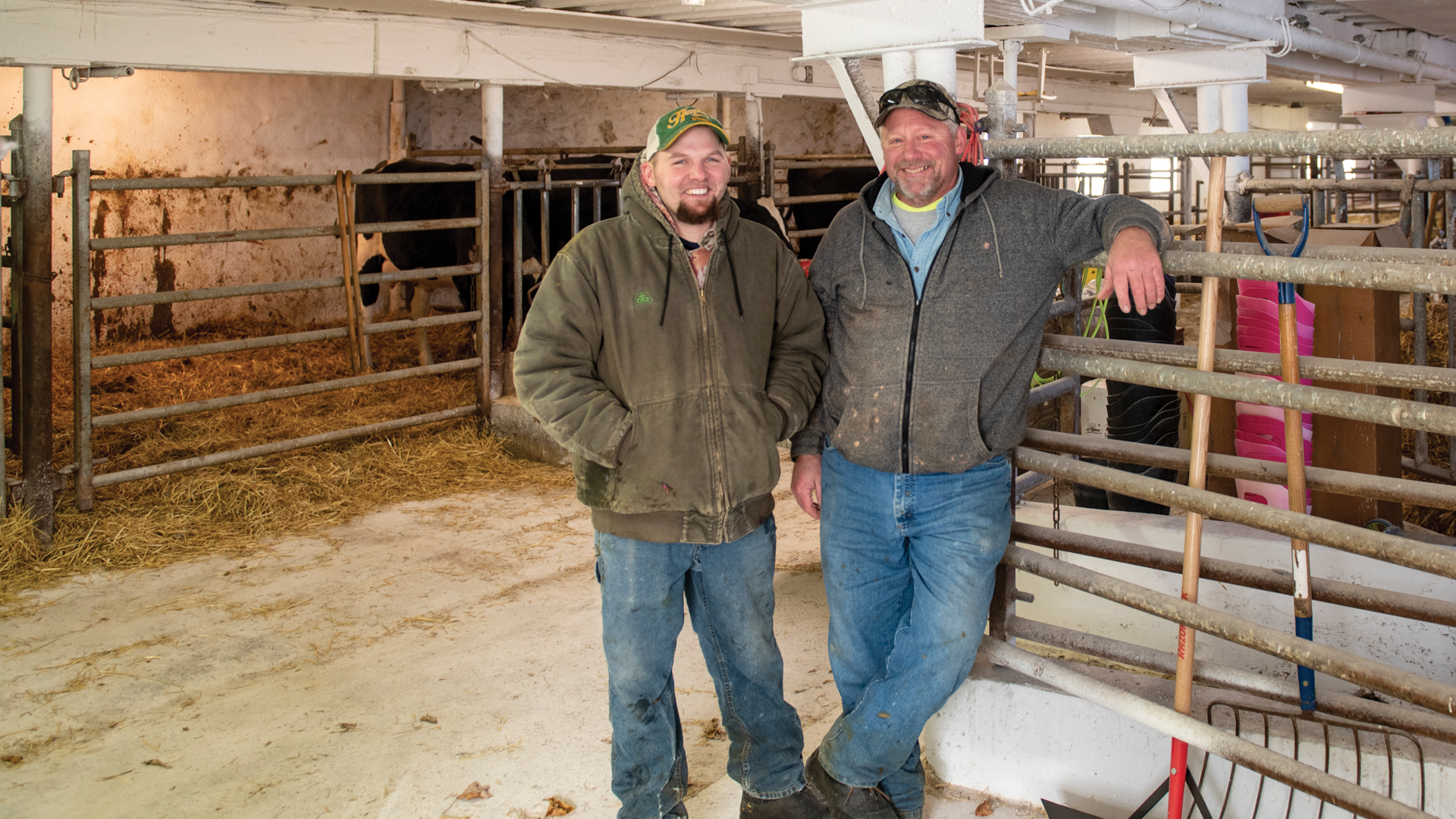Hands-on approach leads to reproductive success
While there are many ways to measure reproductive performance, Dave Oechsner is most proud of his dairy’s 12-month calving interval. An incredible 92% of the herd is confirmed pregnant by 150 days in milk. Dave milks 600 cows in Brownsville, Wisconsin, with his son Alan. They credit a great team, good cow sense and the use of technology for their success.
It only takes a short conversation with Dave and Alan to realize how much they enjoy working with dairy cattle. They walk pens two to three times a day and detect all heats visually. However, Alan is quick to point out that technology plays an important role in their herd’s progress.

Maternity management
The Oechsners genomically test all animals, identifying the top 1% of the milking herd for breeding to dairy sires. They breed heifers with sexed dairy semen, beginning at 10 months of age, paying close attention to daughter calving ease and daughter pregnancy rate when making sire selections.
They use a Double Ovsynch program with ESTRUMATE® (cloprostenol injection) FERTAGYL® (gonadorelin) for the milking herd. Dr. Cassandra Gewiss, a veterinarian from Waupun Veterinary Clinic, checks fresh cows at 22 to 28 days in milk and gives a booster dose of BOVILIS® VISTA® 5 L5 SQ CFP. Heifers receive the first VISTA dose at six months of age, followed with regular booster doses per label instructions. VISTA has demonstrated complete Bovine Virus Diarrhea (BVD) fetal protection throughout the entire pregnancy1 with protection from persistent infection (PI) early in gestation.1
The Oechsners enroll cows into the Double Ovsynch program if they do not display a natural heat by 38 days in milk. If a cow shows a standing heat after the first series of shots, she will be bred. Dave admits that this goes against his veterinarian’s advice as she would prefer they wait to breed cows until after they complete the entire Double Ovsynch program.
“It’s not in my nature to ignore a cow that shows a good standing heat,” Dave says. “We achieve 55% conception rates off of the first Double Ovsynch ESTRUMATE shot and even better conception if we let them go through the whole program.”
The Oechsners switched from LUTALYSE® (dinoprost tromethamine) to ESTRUMATE 10 years ago. “We did our own on-farm trial to compare the two products,” says Alan. “There was no doubt that we saw stronger heats with ESTRUMATE. We haven’t looked back.”
Dave notes that timing of shots is extremely important. “Giving FERTAGYL at the right time has made such a difference for us,” he says. “We do herd checks with ultrasound every Monday. Ultrasound is the number one reason we are seeing such success now compared to a few years back.
“Ultrasound lets us see what is happening inside the cow. There are times our veterinarian will have us restart a cow on Double Ovsynch. All cows 23 to 25 days post-breeding get FERTAGYL followed by ESTRUMATE the following week if found open. If the ultrasound shows that the CL (corpus luteum) is not old enough, we give FERTAGYL two weeks in a row. If there is a dominant CL, we can give ESTRUMATE and get a good response. Without the ultrasound, we wouldn’t know the quality of the CL.”
Dave concludes that it is important to spend time observing the cows. “I know a lot of farms only breed cows once a day, but I’m a firm believer in the a.m./p.m. breeding rule,” he says. “Timing the shots and getting cows bred at the optimum time makes a huge difference. Being on hand, observing the cows and making adjustments based on results is a big part of our success.”
Important Safety Information
ESTRUMATE®: Women of childbearing age, asthmatics, and persons with respiratory problems should exercise extreme caution when handling ESTRUMATE. ESTRUMATE is readily absorbed through the skin and may cause abortion and/or bronchospasms; direct contact with the skin should be avoided and accidental spillage on the skin should be washed off immediately with soap and water. Do not administer ESTRUMATE to a pregnant cow if abortion is not desired. Severe localized post-injection clostridial infections have been reported; in rare instances infection has led to death. At 50 and 100 times the recommended dose, mild side effects may be detected. For complete information on ESTRUMATE, see package insert.
FERTAGYL®: Not for use in humans. Keep out of reach of children. For complete information on FERTAGYL, see package insert.
References
- 1. Xue W, Mattick D, Smith L, Maxwell J. Fetal protection against bovine viral diarrhea virus types 1 and 2 after the use of a modified-live virus vaccine. Can J Vet Res. 2009;73:292-297.
Find more content for your dairy operation.
